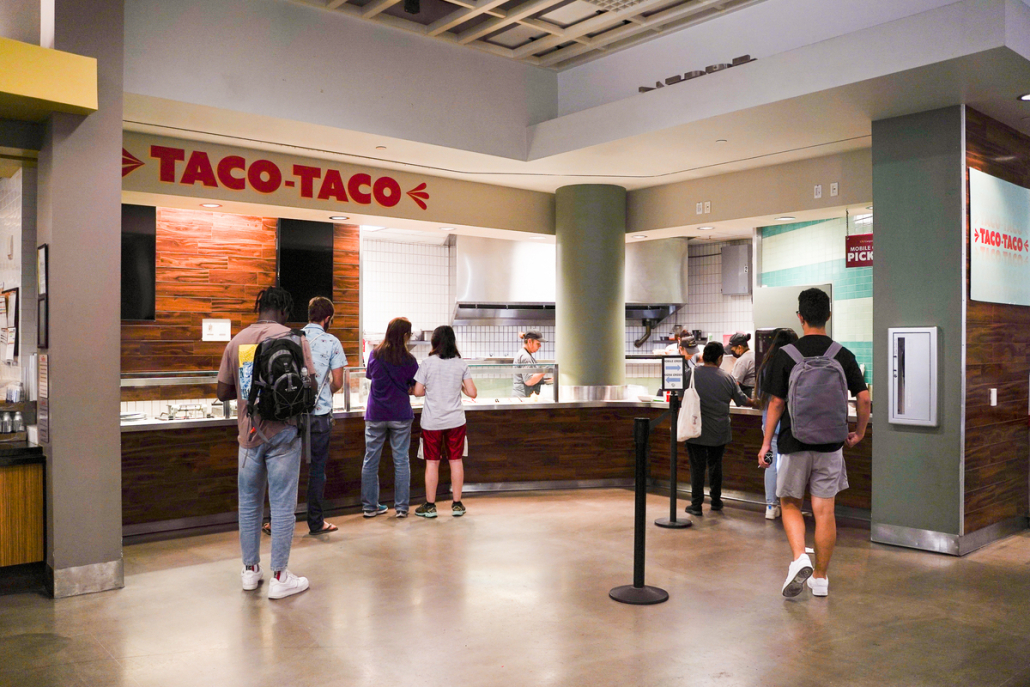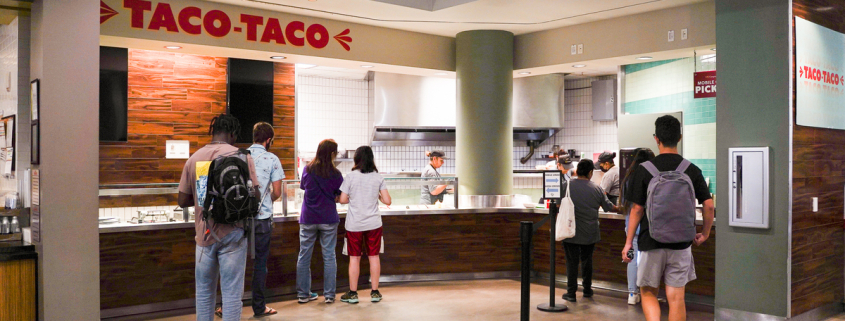New academic year sees changes to USC Dining

USC Hospitality reinstated pre-pandemic dining procedures following the rollout of new meal plan terms and accommodations for the 2022-23 school year.
“Last year, we made a temporary change to our dining plans based on the coronavirus pandemic and the restrictions that were put upon us from the [Los Angeles] County Health Department,” said assistant vice president of USC Hospitality Dirk De Jong. “We had to de-densify the campus.”
The Apartment Meal Plan, required for sophomores, juniors and seniors living in USC Housing apartments, offers 40 residential meal swipes for use at any of the three on-campus residential dining halls and $150 dining dollars. However, the plan no longer provides meal swipes that can be used at the Ronald Tutor Campus Center.
Students on the Cardinal Meal Plan, required for all freshmen living in USC Housing and sophomores, juniors and seniors living in housing residence halls and suites, can use unlimited residential meal swipes at the three campus dining halls and two Campus Center meal swipes per week at the RTCC quick service restaurants — Burger Crush, C&G Juice Co., Seeds Marketplace and Taco Taco.
Within RTCC, USC Hospitality will include new restaurants and meal options that students can purchase with Campus Center swipes or dining dollars, starting with the addition of the famous Law Cafe salmon bowls to the Seeds Marketplace next week.
De Jong said USC Hospitality rebranded Verde as Taco Taco in order to reflect a modified menu inspired by the authentic flavor profile from an L.A. street taco stand. Set to open in September, a signature salad and sandwich concept will open in the space that Lemonade used to occupy in Seeds Marketplace. An Italian deli and pizza concept will replace The Kitchen restaurant in October.
Lindsay Thomas, a sophomore majoring in biology, said she doesn’t appreciate the “lack of freedom” in the Apartment Plan, which prompted her to reconsider applying for USC Housing.
“We can’t use meal swipes basically anywhere but dining halls,” she said. “It takes away a lot of the choice and flexibility that we should be able to have — living independently, having a kitchen — but we’re forced to pay $700 each semester … It makes it even worse for low-income students who are required to purchase this plan.”
The prices of all USC meal plans have increased by 4.5% in 2022-23 compared to 2021-22. According to the United States Department of Agriculture, the consumer price index for food has increased by 10%. USC Hospitality said this difference provides more value to students in spite of inflationary pressures.
USC Hospitality is developing a series of new dining accommodations for students, De Jong said. The first stretch of this plan began Wednesday, with the introduction of one to-go meal per day from any of the three on-campus residential dining halls.
“This is something that the student body has asked for quite some time, so we’re very excited,” De Jong said. “It will be set up at the stations as students walk in at the cashier station and they swipe and can indicate if they want to have their meal to-go. Then they will be issued a container and disposables so they can make their selections and then make their way out.”
USC Hospitality has also recently relaunched its Instagram page (@usccampusdining). Run by USC’s registered dietitian Lindsey Pine, the account aims to better facilitate communication and feedback between the student body and USC Hospitality.
“[Pine] is highlighting all the various options that we have and for every student that has specific dietary restrictions or needs to have help for finding a healthy diet based on their specific situation,” De Jong said. “She has consulting opportunities where [students] can meet with her and where she can tell the students like where to go for what, including in our dining hall.”

This effort to provide more resources for students with dietary restrictions has received mixed reactions from students who have food allergies and restrictions. Ella Lavian, a gluten and lactose-free sophomore majoring in environmental studies, currently uses the Apartment Plan and said she relied heavily on meals from the RTCC last year to get by.
“I knew that I could eat [at the RTCC], which took a weight off my shoulders and being able to eat socially is such an important part of actually building friendships because, of course, meals are a bonding experience,” Lavian said. “I don’t want all my friends to go eat at [the Village Dining Hall] together, and I’d have to be like ‘Sorry, there’s actually nothing I can eat there. I have to eat at [Everybody’s Kitchen] by myself.’”
At EVK and the Parkside Restaurant, Lavian and other gluten-free students use a gluten-free corner of the dining hall. Such an accommodation doesn’t exist at the USC Village Dining Hall, and Lavian said she has to ask chefs to make her something she can eat — which, she said, she often can’t get.
“In [the Village Dining Hall], make a gluten-free corner,” she said. “They have those private dining rooms that nobody ever uses — turn one of them into a gluten-free closet. Put it in a little fridge with some bread, some bagels. Give us a little bit more independence because it’s really, really frustrating.”

